
If you want a career in art and design, an art and design college is the place for you. And one of the most important steps in the art school admissions process is creating a college portfolio that stands out from the rest.
Creating your best art and design portfolio can feel overwhelming. But we’re here to help! Below are some tips (and expert advice from an admissions director) on building an art and design school portfolio that will strengthen your college application—and that could help you land valuable college scholarships.
1. Make sure your portfolio emphasizes your technical skills
When checking out schools’ application requirements, pay close attention to the number of pieces they request you submit. Chances are good that you have many more strong pieces than a school's maximum, so make your first edit wisely.
“I really advise technical skill as your starting filter,” says Ellen Ellis, Director of Admissions at Columbus College of Art & Design. “Students should pick the pieces that really show off their technical prowess or skill in whichever mediums they're strongest in.”
Consider how many pieces to include in your college art portfolio
While some colleges have very specific criteria regarding what should go in a student’s portfolio, Columbus College of Art & Design asks for 8–15 pieces of work, but otherwise leaves the selection up to you. Think of your portfolio like a greatest hits album, says Ellis.
“So you’ll have that amazing, technically sound, observational drawing or live model study, but then you’ve got that cool comic you started that’s based off of the Dracula story, and you have a digital environmental study. Not every single one of your pieces is going to check off every box, but you can pick pieces that check off as many boxes as possible,” she says.
Are you terrific at creating photo-realistic drawings? Or is your strength in photo composition? Select the works that show off your technical talents first.
2. Include a variety of works in your portfolio
A strong college portfolio also demonstrates a variety of approaches to art or design. If you’re strong in a certain area, whether that’s paint, digital illustration, ceramics, or anything else, you can still show variety within those categories.
For instance, says Ellis, you can show variety in scale—what does it look like when you work really small? What does it look like when you work really big? “Or you can show variety in your use of color,” she continues. “Grayscale can be symbolic and set some moods; color can be used in hyper-realistic ways.”
Do you like creating characters for comic books or graphic novels? Go beyond straightforward character portraits in your comics design portfolio. “Show me characters in the midst of a storytelling moment, playing off of one another,” Ellis says. “Or show me environments, the habitats in which they live. You can create variety that way.”
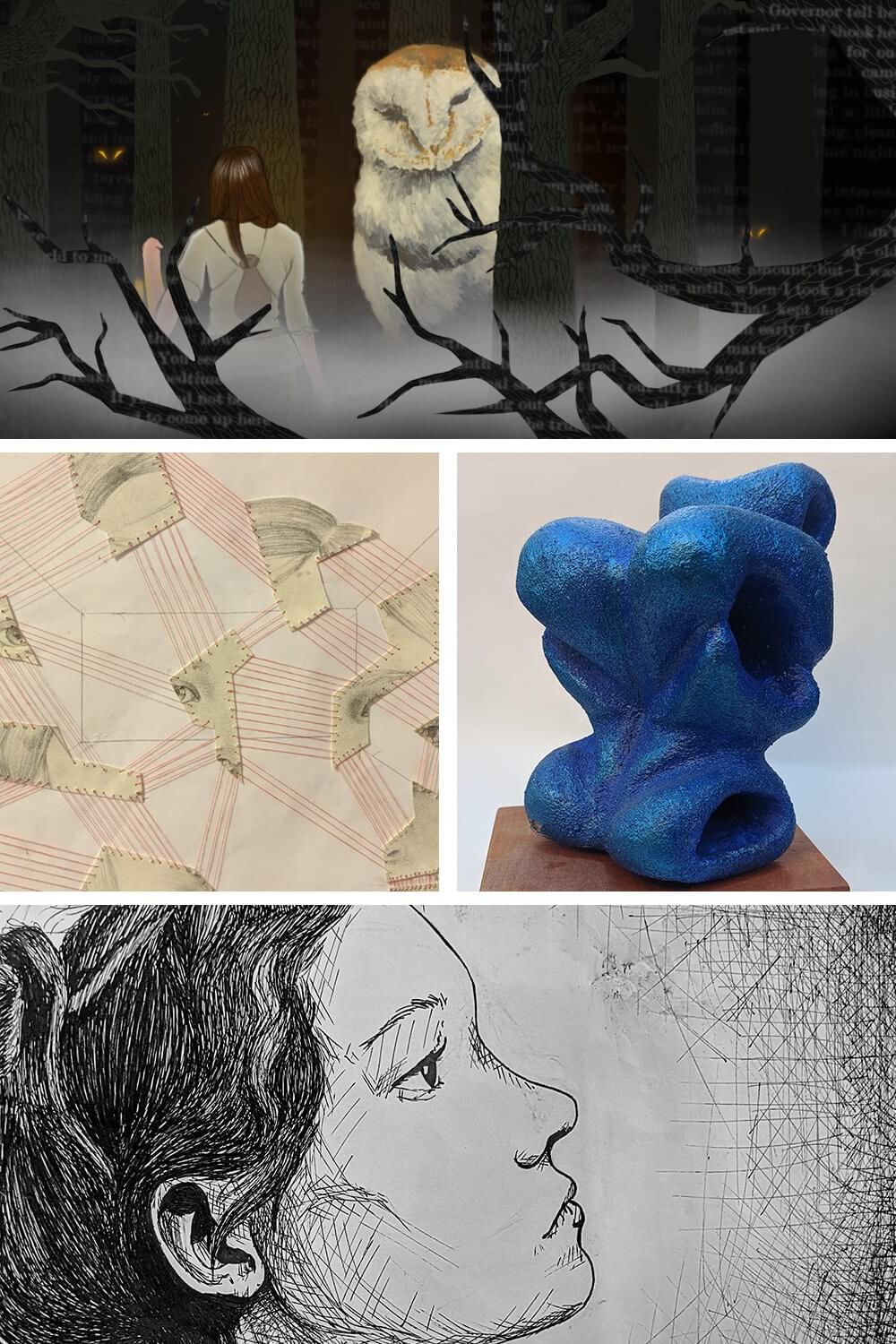
3. Look for ways to demonstrate originality in your approach to making art
You might have experienced pretty standard art class assignments to create a still life or to design a costume. But there are still ways you can demonstrate your unique point of view when showcasing your work, says Ellis. For a fashion design portfolio, can you create a dress that has an unusual silhouette? Or what about using fabrics in an unexpected way—or maybe using “fabrics” that aren’t even fabrics to start with, like a plastic trash bag.
“If you're ever given the opportunity to flex your unique strengths and interests, do it. Lean into more original things that we don’t see from a typical applicant,” she says.
4. Include artwork or designs that tell a story
Storytelling is key in many creative fields, and it’s one of the elements admissions counselors seek in art school portfolios. “Say, your goal is to become an illustrator or a comics artist or an animator. You’re doing storytelling through the characters you develop or actual storytelling moments, like characters playing off of each other or showing emotions. They’re angry, they’re sad, they’re falling in love, they’re fighting … it’s that kind of story we love to see,” says Ellis.
For example, a student might create a scene in their illustration portfolio showing Batman taking on Superman. “Now that’s a storytelling moment, right? So that’s checking that box,” says Ellis. And if you can tackle multiple elements, that’s all the better. “So, if you have unique characters you’ve developed and they’re interacting with another, now you’re checking off originality and storytelling,” she says.
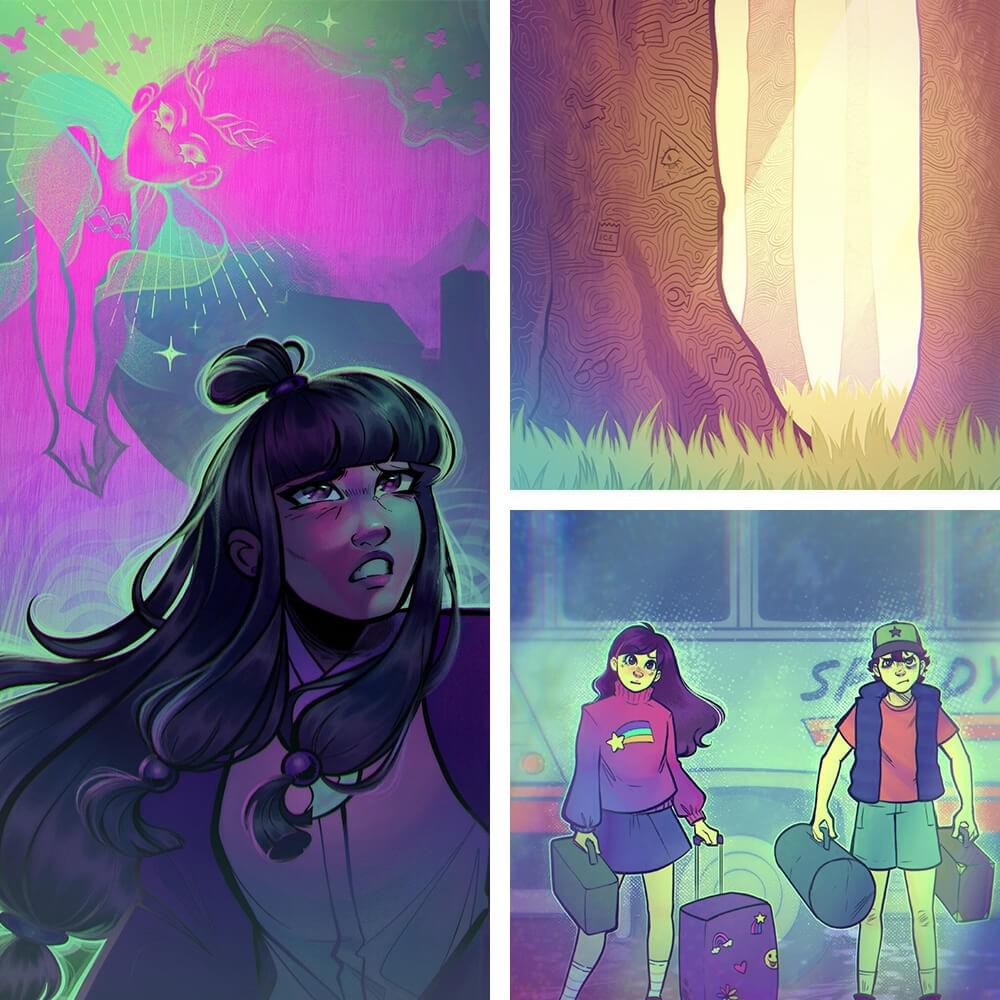
5. Showcase conceptual pieces in your portfolio
Admissions counselors also look for conceptual pieces, especially if a student is interested in pursuing a path in fine arts and practices such as photography, drawing, and even ceramics, says Ellis. “I think it sometimes gets confused with originality, or people may think that ‘concept’ means a work has to be serious. But what conceptual art really means is, ‘Is this work saying something?’”
“‘Conceptual’ can be funny,” Ellis continues. “‘Conceptual’ can be quirky, it can be dark. It can be personal.”
6. Select portfolio pieces that demonstrate function
Interested in working in design? Showing work that works is key. Perhaps you specialize in graphic design and need to showcase a functional graphic design portfolio. Have you created a menu for a business? Or have you tackled web design? Your work might not be highly conceptual, but if it’s done well, it will demonstrate function in the real world, and can be a great design portfolio piece.
Function matters outside of design programs, too. For instance, if you’re interested in working in fine arts and you make ceramic works, utility may matter in your pieces as well. Is that teapot you made well-balanced? Is the handle nicely affixed? If so, it’s a piece that demonstrates function for a fine arts portfolio.
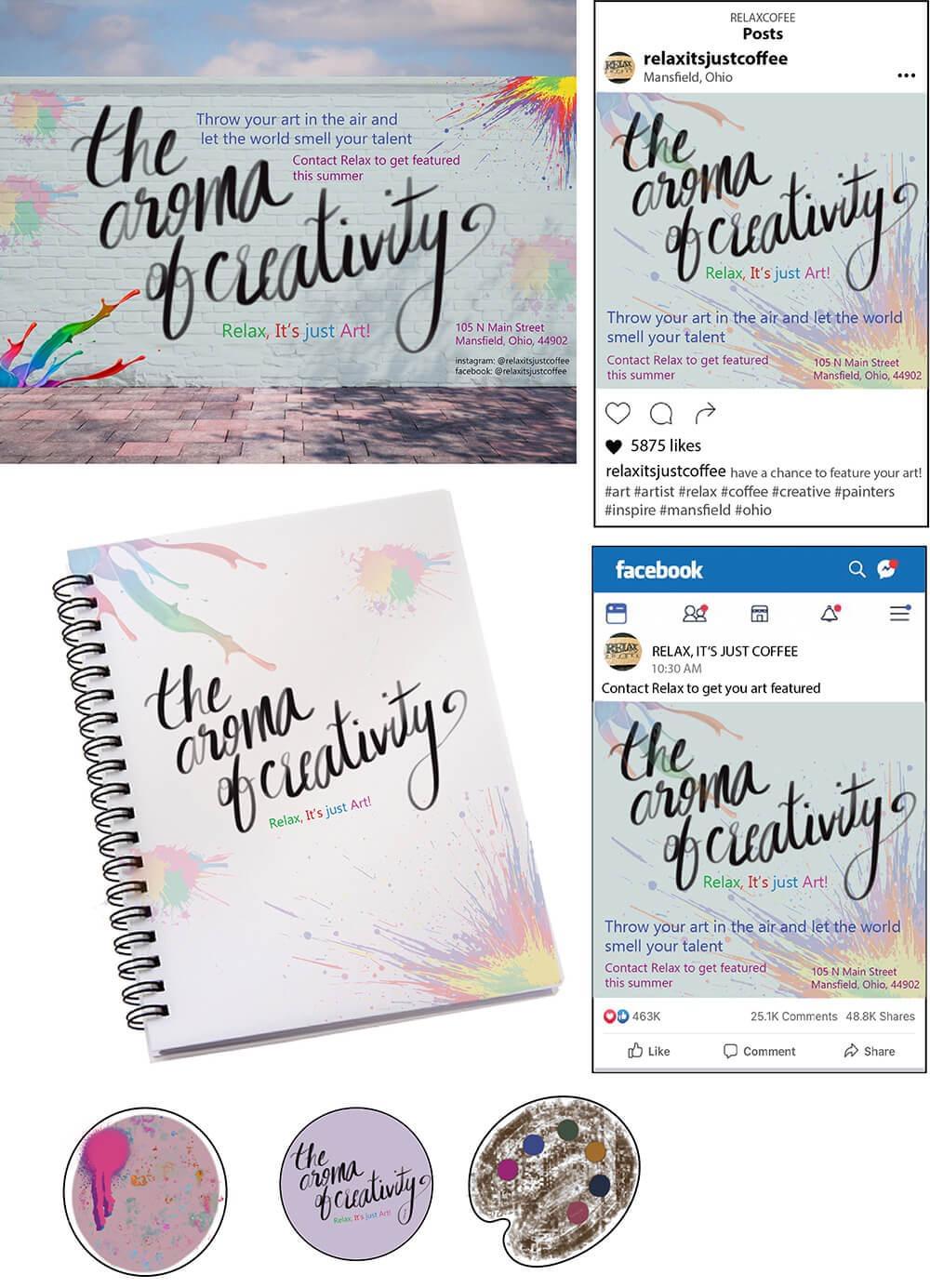
7. Create an organizational system for your best work.
Be sure to consistently document your work, such as the title, the media in which you created it, dimensions, and so on. “That’s all valuable and important information,” Ellis says.
Keep your portfolio organized and easy to navigate
And you’ll want to track the locations of your physical and digital works, too. Do you have tons of sketchbooks? Lots of digital files? Art pieces scattered across family members’ homes and storage spaces? It’s wise to develop a methodology to track where your work is and what your strongest pieces are, says Ellis.
“Start saving now, so when the time comes to do this real work of applying to college, you’ve got that aspect done,” she says.
Organize your school selection process
And you’ll not only want to organize your work, you’ll want to organize your school selection process, too, using a spreadsheet or list to track deadlines, requirements, and other key items.
“Each college admissions office will have slightly different opinions of what we want to see, and a portfolio is not as one-size-fits-all as you would hope it would be, so it matters to do the research, and to take the sometimes scary step of talking to people, calling admissions offices and taking advantage of events such as National Portfolio Day,” Ellis says.
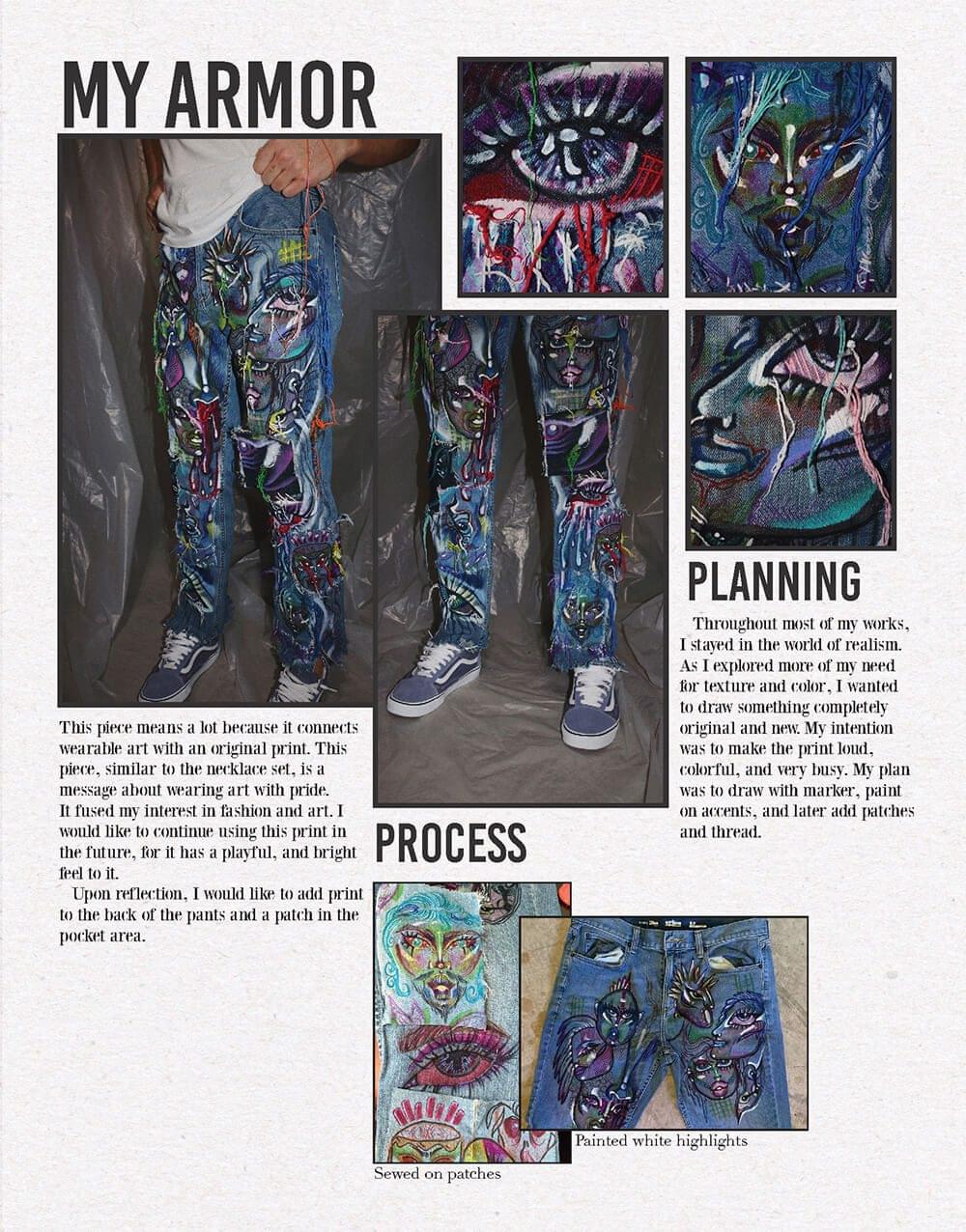
8. It’s OK if your portfolio work doesn’t demonstrate access to the latest tech and high-end materials
Ellis says she and the admissions team at Columbus College of Art & Design understand that many school districts have cut or eliminated art resources and some students may not have access to a variety of art classes.
“My advice is that if you have a creative passion, then you should just make what you can with what you have,” she says. A lack of access can be a challenge, she acknowledges, “but don't let that stop you. I have seen eye-catching work from students with a pencil and paper. I have seen incredible works from students made out of free newspapers and fliers and junk mail. I have seen amazing stuff made out of the leftover grocery bags.”
Your portfolio isn’t your major
And CCAD understands that because of these access issues, students may be interested in pursuing a major that’s not directly related to the contents of their portfolio, says Ellis. “For example, I’ve had many Fashion Design students say, ‘I am so excited to go into fashion and I can draw and I’ve done some mood boards, but I mostly paint in traditional media’ because that’s what they’ve had access to in their classes,” she says. “That’s fine. We will teach you how to sew.”
Find local art classes and workshops
Students can also look for art and design classes and workshops outside their school setting, says Ellis. For instance, CCAD hosts Saturday Morning Art Classes for people of all ages, from elementary school through adults, as well as College Preview for high school students considering a career in art and design. “Take advantage of the resources that might help you,” Ellis says.
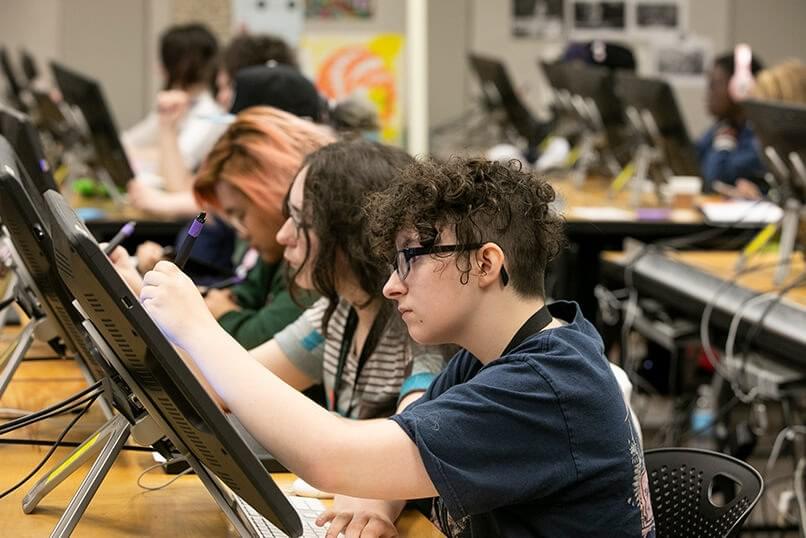
9. Be sure to get feedback from the professionals at events like NPD
Events such as National Portfolio Day are a great way to get your art and design portfolio in front of the experts. At NPD events, you’ll have the opportunity to meet one-on-one with professionals representing accredited colleges and universities and get helpful feedback on your portfolio before you officially submit any college applications.
Ellis says students shouldn’t get too caught up in worries about how formal or informal their portfolio when they bring their work to an event like NPD. When it comes down to it, a portfolio “is just a body of work,” she says. “We have students come and they have a traditional portfolio case and they take out their drawings … but we also have students walk in and say, ‘I have a maker account on Instagram’ and we do some scrolling on it.”
Schedule online portfolio reviews and campus visits
Beyond events like NPD, take advantage of campus visits or even an online portfolio review, Ellis says. “We love an in-person moment, but we also do a lot of one-on-one portfolio reviews on Zoom, or we’re happy to hop on a call for 15 minutes with a student, wherever they are, and they screen share or email their stuff in advance and we go over it,” she says.
Portfolio reviews, whether they happen in-person or online, on CCAD’s campus or elsewhere, are intended to provide students with feedback and help them make informed decisions and adjustments to their portfolios so that when it’s time to officially submit a portfolio for consideration, they’re putting their best foot forward. “We want them to be able to give the best of what they’re able,” says Ellis.
10. Now take that last step to make your portfolio the best it can be
So, after you’ve had that art and design portfolio review, consider what changes to make so that your college application can be as strong as possible. Are you missing original works? Conceptional pieces? If you have work that fits the bill, include it, or consider making work that will fill those gaps. Show the best of your creative pursuits, even if they aren’t specific to the major you want to pursue.
And remember, a portfolio is one aspect—an important aspect, but only one—of the admissions requirements at a place like Columbus College of Art & Design, and is considered alongside a student’s GPA and essay, says Ellis. “I don’t want to be too flippant about this, but I do want students to understand that it’s not as strict or formal as they may think,” she says. Many admissions officers at CCAD and elsewhere are themselves artists and designers, “and if there’s anyone who’s going to get it, we will,” Ellis says.
Bonus tip: Busting one big Admissions myth
As you go through the college admissions process, there’s something important to keep in mind, says Ellis: Admissions counselors are here to help you.
“This is not just specific to CCAD or to art and design schools, but to higher education in general: In this cultural moment, there’s this idea that the admissions office is very much a gatekeeper. That they’re gatekeepers who are trying to hold the gate closed,” she says. “But, really, we have it wide open. We want you to be here, and we want to help you get as much money for college as possible. We want you to do your best so that you can maximize this moment and get all the aid you can.”
Have portfolio-related questions or want more info on applying to Columbus College of Art & Design? Email [email protected].
